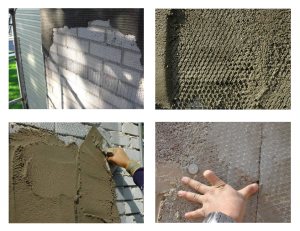Wall-plastering metal mesh is widely used in the construction industry, mainly used for wall insulation, crack prevention, hollowing, etc. The following are several common wall-plastering metal meshes and their characteristics:
1. Electric welding wall-plastering mesh
Definition and use: Electric welding wall-plastering mesh, also known as plastering welded mesh, is a kind of wire mesh used in building exterior walls, pouring concrete, high-rise residential buildings, etc., and plays an important structural role in the insulation system.
Types: Mainly include hot-dip galvanized welded mesh and modified wire-drawn welded mesh. Hot-dip galvanized welded mesh has a long life and strong anti-corrosion function; modified wire-drawn welded mesh is economical, flat, white and shiny.
Advantages:
Material and process: Select high-quality low-carbon iron wire, after being spot-welded and formed by automated precision mechanical equipment, the surface treatment of zinc dipping technology is adopted to make the mesh smooth and regular, and the structure is firm and uniform.
Anti-corrosion performance: Even if it is the iron screen with the strongest anti-corrosion function, it is also one of the most widely used meshes of iron screens.
Construction effect: During construction, the polystyrene board is placed on the inner side of the outer mold of the exterior wall to be poured. The outer insulation board and the wall are alive at one time. After the mold is removed, the insulation board and the wall are combined into one.

2. Steel plate mesh
Definition and use: Steel plate mesh for wall plastering is a major application field of steel plate mesh. It is installed and used during the wall plastering process. It mainly plays the role of reinforcement and crack prevention. It is a necessary reinforcement metal building material for building walls.
Material and process: It is made of stainless steel or galvanized sheet metal, which is made by mechanical punching, shearing and stretching. Steel plate mesh chooses very thin stainless steel sheet metal, the thickness is generally about 0.2 mm.
Features:
Eye specifications: Diamond holes generally choose smaller eye specifications, the long pitch of the eye is between 10mm-20mm, and the short pitch is between 5mm-15mm.
Surface treatment: After production is completed, the surface is generally painted to increase its acid and alkali corrosion resistance.
3. Other wall-plastering metal mesh
Although the above two are more common wall-plastering metal meshes, there are other types of metal meshes that are also used in wall construction, such as lead meshes. These metal meshes usually have the characteristics of precise structure, uniform mesh, good corrosion resistance and durability.
The role of wall-plastering metal mesh
Anti-crack: wall-plastering metal mesh can resist the tensile force generated by wall cracking and prevent the generation of cracks.
Fitting: As the skeleton of plastering, it increases the bonding between plastering materials (such as cement mortar) and the wall surface to prevent the plastering layer from separating from the base layer and causing hollowing.
Precautions
Anti-corrosion treatment: Since the metal mesh is easily corroded by contact with moisture in the air, affecting its service life, anti-corrosion treatment should be paid attention to during use.
Construction difficulty: The metal mesh needs to be reliably fixed during construction to ensure that it is close to the wall surface to avoid hollowing problems caused by improper construction.
In summary, wall-plastering metal mesh plays an important role in the construction industry. Its variety and powerful functions provide a strong guarantee for the stability and beauty of the wall.
Post time: Jul-16-2024






